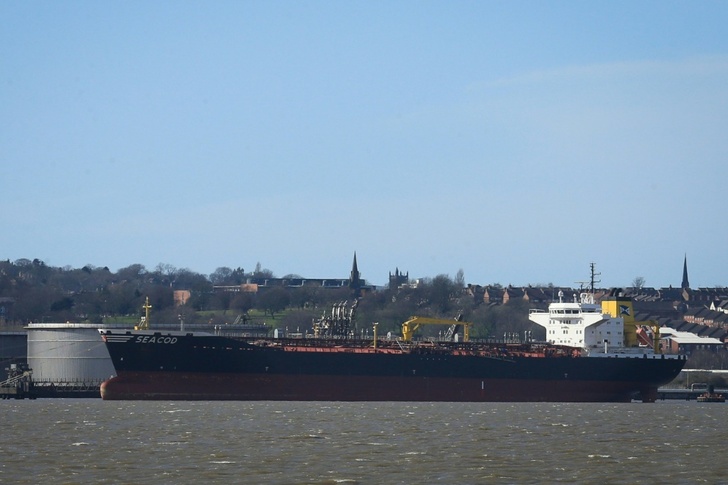Russia's oil-export revenue sank by almost half in February compared to last year as Western powers tightened sanctions on the country, the International Energy Agency said on Wednesday.
The country earned $11.6 billion from its oil exports last month after the European Union imposed a ban on Russian petroleum products alongside a price cap agreed with the Group of Seven and Australia, according to the IEA.
This was down from $14.3 billion in January and a 42 percent drop from $20 billion in February last year.
Russia, however, was still shipping "roughly the same" amount of oil to world markets, according to the IEA, which advises wealthy nations.
"This indicates that the G7 sanctions regime has been effective in not restricting global crude and product supplies, while simultaneously curtailing Russia's ability to generate export revenue," the IEA said.
Russian oil exports fell by 500,000 barrels per day to 7.5 million bpd in February, with a big drop in shipments to the EU, but it was still near pre-war levels.
"Recent tanker tracking data suggest that Moscow has managed to re-route most of the barrels previously destined for the EU and US to new outlets in Asia, Africa and the Middle East," the IEA said.
"Although it has been relatively successful in sustaining volumes, Russia's oil revenue has taken a hit."
Shipments to the EU plunged by 760,000 bpd to just 580,000 bpd, the IEA said.
Over the past year, 4.5 million bpd of Russian oil that used to go to the EU, North America and other members of the OECD had to find new customers, the Paris-based agency said.
China and India took in more than 70 percent of Russian crude exports last month, the IEA said.
"Willing buyers in Asia, namely India and, to a lesser extent, China, have snapped up discounted crude oil cargoes, but increasing volumes on the water suggest the share of Russian oil in their import mix may be getting too big for comfort," it added.
- Global demand accelerates -
As for petroleum products, "a more diverse set of buyers" has emerged as exports to the EU and G7 fell by almost two million bpd compared to pre-war levels in February, the IEA added.
Exports to Asia grew by less than 300,000 bpd while shipments rose by 300,000 bpd in Africa, 240,000 bpd in Turkey and 175,000 bpd in the Middle East.
"It remains to be seen if there will be sufficient appetite for Russian oil products now that the price cap is in place or if its production will start to fall under the weight of sanctions," the IEA said.
Russia plans to slash its crude output by 500,000 bpd this month, or five percent of its production, in the wake of the sanctions.
Western powers set a price cap in February of $100 per barrel for more expensive fuel like diesel and $45 on lower-quality products such as fuel oil.
The price ceiling on crude exports was set at $60 dollars per barrel late last year.
The IEA said it expects global oil demand to accelerate sharply over the course of the year to reach a record 102 million bpd as the aviation industry recovers from the pandemic and China's demand rises after it dropped its Covid restrictions.
lth/cw
© Agence France-Presse
Your content is great. However, if any of the content contained herein violates any rights of yours, including those of copyright, please contact us immediately by e-mail at media[@]kissrpr.com.
Source: Story.KISSPR.com

